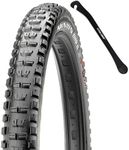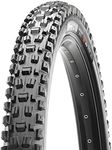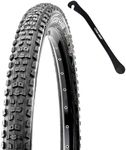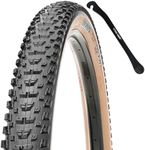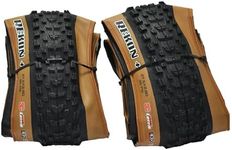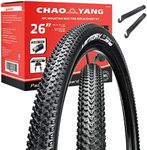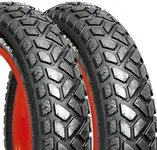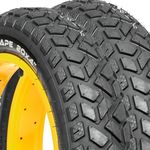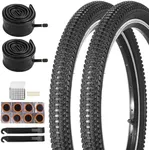Buying Guide for the Best Maxxis MTB Tires
Choosing the right mountain bike (MTB) tires is crucial for ensuring a safe and enjoyable ride. The right tires can significantly impact your bike's performance, handling, and comfort. When selecting MTB tires, consider the type of terrain you'll be riding on, your riding style, and the conditions you expect to encounter. Here are some key specifications to help you make an informed decision.Tire WidthTire width refers to the measurement of the tire from one side to the other. This spec is important because it affects the bike's grip, stability, and rolling resistance. Wider tires (2.3 inches and above) offer better traction and stability, making them ideal for rough and technical trails. Narrower tires (2.0 to 2.2 inches) are lighter and faster, suitable for cross-country riding and smoother trails. Choose wider tires for aggressive riding and narrower ones for speed and efficiency.
Tread PatternThe tread pattern is the design of the tire's surface that comes into contact with the ground. It is crucial because it determines the tire's grip and performance on different terrains. Tires with large, aggressive knobs are perfect for muddy, loose, and rocky trails, providing excellent traction. Tires with smaller, closely spaced knobs are better for hard-packed trails and offer lower rolling resistance. Select a tread pattern based on the type of terrain you ride most often.
Tire CompoundTire compound refers to the material used in the tire's construction, affecting its durability, grip, and rolling resistance. Softer compounds provide better grip and traction but wear out faster, making them suitable for technical and downhill riding. Harder compounds are more durable and offer lower rolling resistance, ideal for cross-country and long-distance riding. Consider your riding style and the balance between grip and durability when choosing a tire compound.
Tubeless CompatibilityTubeless compatibility indicates whether a tire can be used without an inner tube, relying on a sealant to prevent punctures. Tubeless tires are important because they offer better traction, lower rolling resistance, and fewer flats. They are ideal for riders who want a smoother ride and are willing to invest in the setup. If you frequently ride on rough terrain and want to minimize the risk of flats, tubeless tires are a great option.
Sidewall ProtectionSidewall protection refers to the reinforcement of the tire's sidewalls to prevent cuts and abrasions. This spec is important for riders who tackle rocky and rough trails, as it enhances the tire's durability and longevity. Tires with reinforced sidewalls are heavier but provide better protection against damage. If you ride in areas with sharp rocks and debris, prioritize tires with strong sidewall protection.
WeightThe weight of the tire affects the bike's overall performance, including acceleration and handling. Lighter tires are easier to accelerate and handle, making them suitable for cross-country and racing. Heavier tires offer better durability and stability, ideal for downhill and aggressive trail riding. Consider the balance between weight and durability based on your riding style and the type of terrain you encounter.
